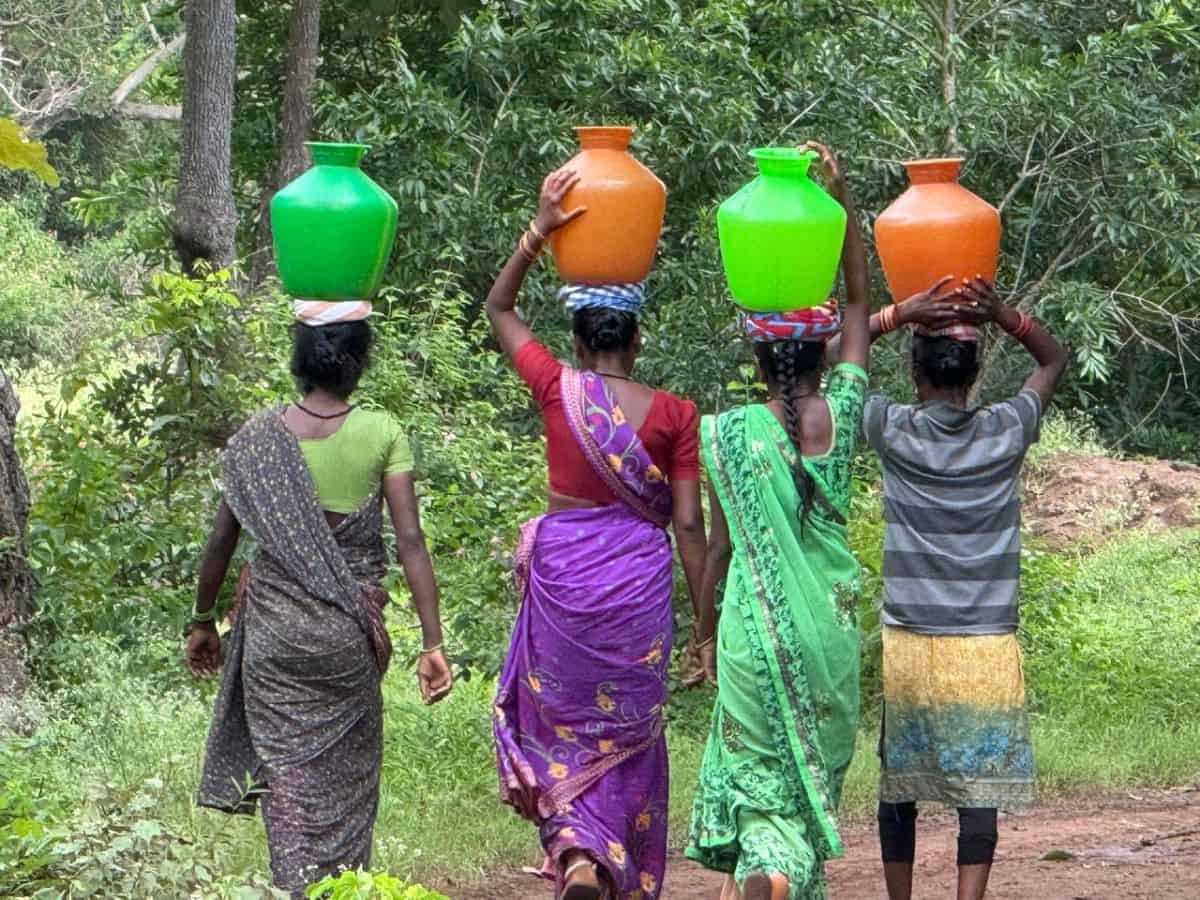
Hyderabad: The Nallamala forest is a major catchment area for the inflows into the Krishna River. It has been raining almost every day, and small streams can be seen crossing the thar roads inside the forest.
Yet, irony speaks loud inside the tribal habitations, as the Chenchus living deep inside the core forest area continue to face severe scarcity of water. With their borewells dysfunctional, water sources located away from their hamlets, and the water tankers hardly delivering during the rains, the Chenchus have been left with no option but to carry water from outside their habitations.

It was during summer when Chenchus from some of the tribal hamlets and villages in the core forest area and buffer zone in Lingal, Balmoor and Kollapur went to meet Telangana panchayat raj minister Danasari Anasuya (Seethakka) in Hyderabad. Among their many grievances was the scarcity of water, as the borewells in their hamlets had either dried, or were blocked.
The minister immediately sanctioned Rs 80 lakh and ordered the rural water supply (RWS) officials of Nagarkurnool district to dig borewells in all the villages, so that the tribals didn’t face scarcity of water. A list was prepared and funds were allocated to every village. The summer has passed and the monsoons have been active, but water has become sour grapes for the Chenchus living in the core forest area.
‘Bugga Vagu’ is a local stream which originates from the hilly areas of the forest, flowing downstream changing its form and name to ‘Gundam Vagu’ while flowing close to Appapur penta. Its flow becomes fierce as it flows further downstream, finally culminating into ‘Vemulapaya,’ a tributary which enters the Krishna River in the Srisailam backwater area.
The core area Chenchus have been demanding for several years, urging the authorities to construct a check dam on the Gundam Vagu, which would ensure water availability in the area around Appapur penta throughout the year. The topography of the stream near Appapur is such that the stream descends the hills and falls into a Gundam (pond) before flowing downstream.
“By constructing a check dam downstream of the Gundam will ensure the availability of plenty of water. Even in the past, the forest department tried to build a check dam, but it was washed away in the flow because they built it in the wrong place. If they build the check dam downstream of the pond, it will certainly help store massive quantities of water,” a resident of Appapur, Thokala Chinna Mallaiah told Siasat.com.
As Appapur penta is located at a higher altitude (between 100 to 200 ft) from where the stream flows, the Chenchus suggest the installation of a solar pump set to lift the water atop a hillock, delivering it either into an overhead tank built atop the hill, or to deliver it into a sump, from where the water can flow into the penta through gravity using pipelines.
“Every year they dig borewells, which become dysfunctional after the massive network of underground root-system of the forest trees blocks these borewells underground. Even flushing won’t work because of the strength of the roots which would have already penetrated the borewell. Yet, they do the same exercise again and again for reasons best known to RWS officials,” noted Thokala Guruvaiah, another resident of Appapur.

“Just like Rs 50 lakh given by former governor Dr Tamilisai Soundararajan to the district administration and the Red Cross Society of Nagarkurnool for developmental works in our remote hamlets had gone with the wind, even Rs 80 lakh given to dig borewells and supply of water must have vanished in the thin air,” said Guruvaiah.
Though the Chenchus have been demanding the district administration check dams on the local streams and minor irrigation tanks built by the Kakatiyan rulers of the medieval period, which are still as strong, no efforts have been made to realise their aspirations.
Without the availability of water during the summers let alone during the Kharif season, the Chenchus have not been able to perform agriculture and other allied activities that could have helped create in-situ livelihoods for them.
“Because of the non-availability of water during the summer, animals have been descending the hillocks and entering the villages in the buffer zone, where they have been falling prey to the traps being laid by the hunters who have no intention of protecting the wild animals,” Guruvaiah points out.
A common sight during the summers is the annual forced migration of the star turtles which are native to the Nallamala, as they can be seen moving on the tar roads, trying to find water to survive. That puts them at grave risk of either being hunted or being poached by the people who illegally enter the forest.



